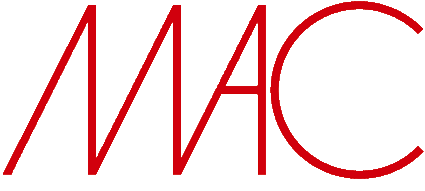Carolina Rossetti de Toledo, Ana Gonçalves Magalhães e Peter John Brownlee
Curadores
Atelier 17 e a Gravura Moderna nas Américas apresenta um grupo de 53 gravuras realizadas entre 1910 e 1960. Este período na gravura foi marcado por uma onda inédita de inovação e experimentação, elevando o status das gravuras como um meio valorizado para a expressão criativa das ideias e estética modernistas. Com foco no papel do Atelier 17, como pioneiro no desenvolvimento de novas abordagens para a gravura moderna, esta exposição é fruto de uma pesquisa realizada sobre um grupo de 25 gravuras norte-americanas da coleção do MAC USP, a maioria em exposição pela primeira vez desde que foram adquiridas. Com obras da coleção da Terra Foundation for American Art e outros empréstimos internacionais, esta exposição ilustra o vasto elenco de possibilidades técnicas e visuais, métodos, processos e materiais do campo expandido da gravura moderna.
O Atelier 17 foi um estúdio coletivo dirigido por artistas e fundado pelo artista britânico Stanley William Hayter, que inicialmente se estabeleceu em Paris e se mudou para Nova York após a invasão da França pela Alemanha em 1940. Em seu estúdio, ele promovia um vigoroso ambiente de colaboração e foi altamente influente, atraindo a atenção de uma ampla gama de artistas internacionais, entre os quais brasileiros, como Lívio Abramo e Geraldo de Barros, cujos trabalhos são apresentados aqui junto com o de seus pares norte-americanos. Entre estes, John Ferren e artistas mais jovens, como Jackson Pollock e Louise Nevelson, frequentaram o Atelier 17, onde trocavam ideias e eram expostos a novas tendências nas artes visuais.
Hayter não estruturou seu estúdio do modo convencional mestre-aluno. Em vez disso, dava aos jovens artistas um espaço para experimentarem novas técnicas e métodos inovadores de gravura. Esses aspectos do Atelier 17 fizeram dele um centro para artistas com diferentes formações e vindos de diversos países. Enquanto alguns artistas desenvolveram no estúdio um trabalho breve, mas influente, outros mantiveram uma colaboração de longo prazo. Estudos recentes enfatizam a presença significativa de artistas mulheres no estúdio, como Minna Citron, Sue Fuller e Ann Ryan, entre outras. A história do Atelier 17 oferece assim novas perspectivas contemporâneas que nos permitem reavaliar as formas de promover e produzir arte hoje.
Atelier 17 and the Modern Printmaking in the Americas showcases a group of 53 prints made between 1910 and 1960. This period in printmaking was marked by an unprecedented wave of innovation and experimentation, elevating the status of prints as a valued medium for creative expression of modernist ideas and aesthetics. Focusing on the role of Atelier 17 in pioneering the development of new approaches to modern printmaking, this exhibition is the result of research undertaken on a group of 25 American prints from the collection of MAC USP, most of them on view for the first time since they were acquired. With works from the collection of the Terra Foundation for American Art and other international loans, this exhibition illustrates the vast array of technical and visual possibilities, methods, processes, and materials of the expanded field of modern printmaking.
Atelier 17 was an artist-led collective studio founded by British artist Stanley William Hayter, who first established himself in Paris, and then moved to New York upon Germany's invasion of France in 1940. In his studio, he fostered a powerful collaborative environment and was highly influential, attracting the attention of a wide range of international artists, including Brazilians such as Lívio Abramo and Geraldo de Barros, whose works are presented here together with those of their American peers. Among the Americans, John Ferren and younger artists like Jackson Pollock and Louise Nevelson frequented Atelier 17, where they exchanged ideas and were exposed to new trends in the visual arts.
Hayter did not structure his studio in the conventional master-student way. Instead, he gave young artists a space to experiment with new techniques and innovative printing methods. These aspects of Atelier 17 made it a hub for artists of various backgrounds and from a variety of countries. While some artists' work in the studio was brief but influential, others collaborated long-term. Recent scholarship has emphasized the significant presence of women artists in the studio such as Minna Citron, Sue Fuller, and Ann Ryan, among others. The history of Atelier 17, thus offers new perspectives on the contemporary that allow us to revaluate ways of promoting and making art today.
© 2019 Museu de Arte Contemporânea da Universidade de São Paulo


